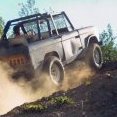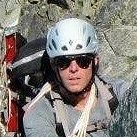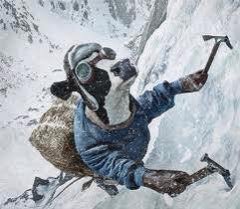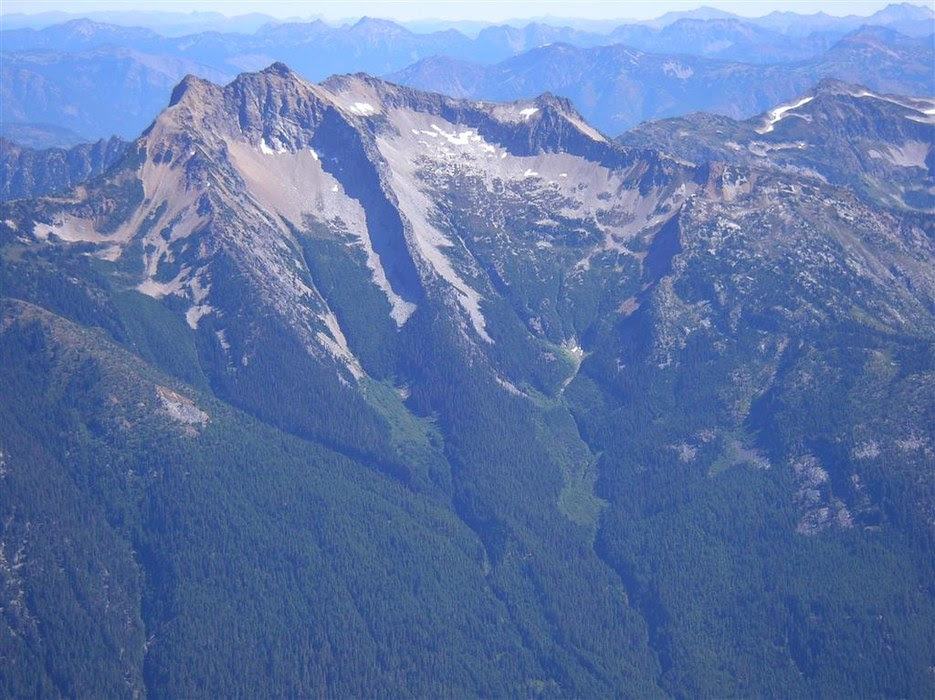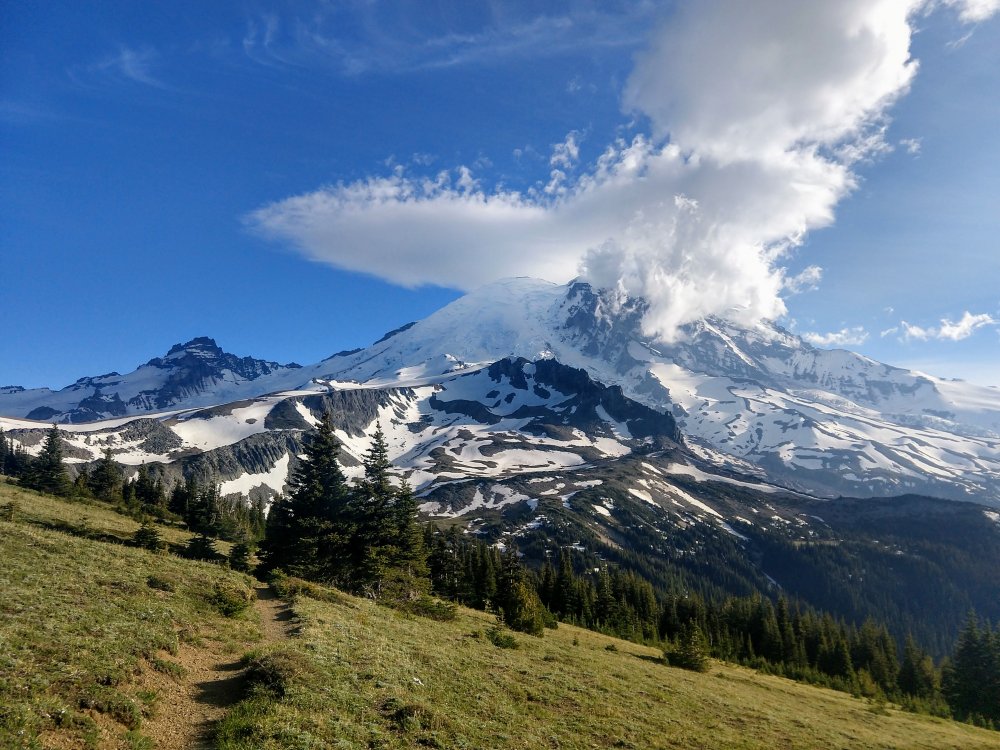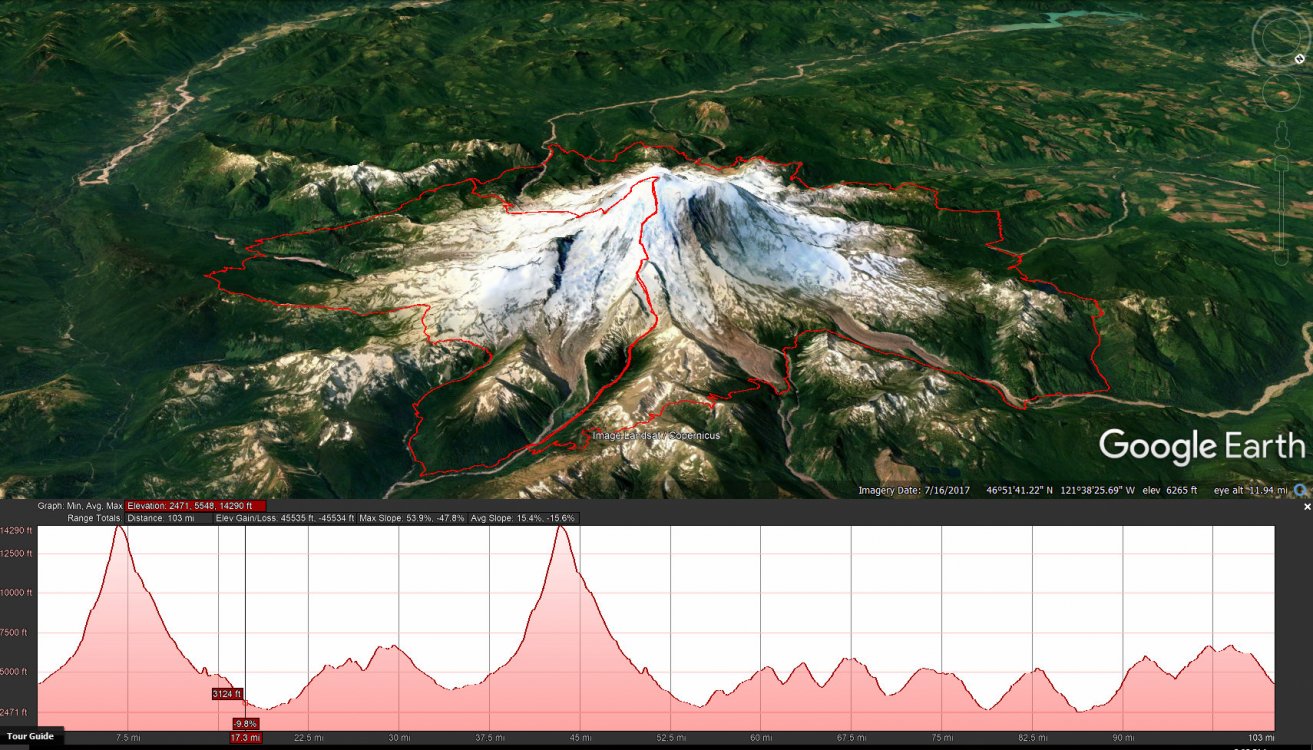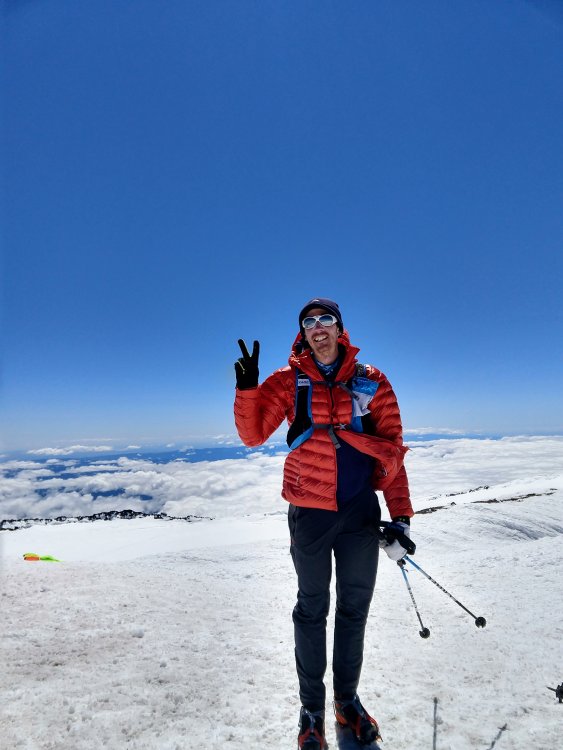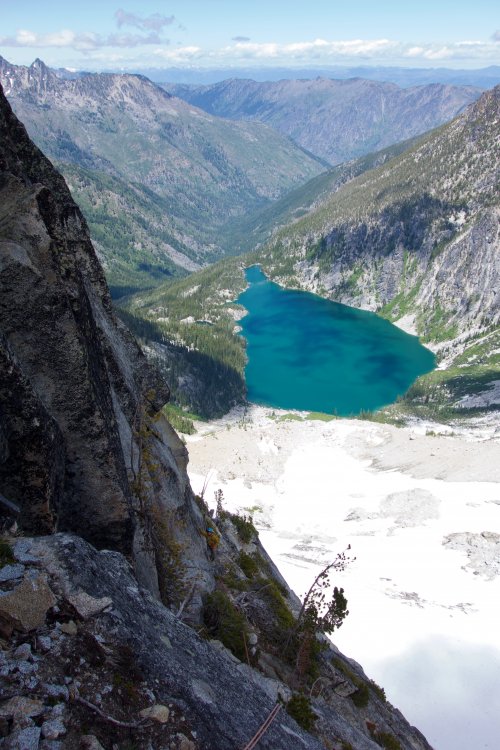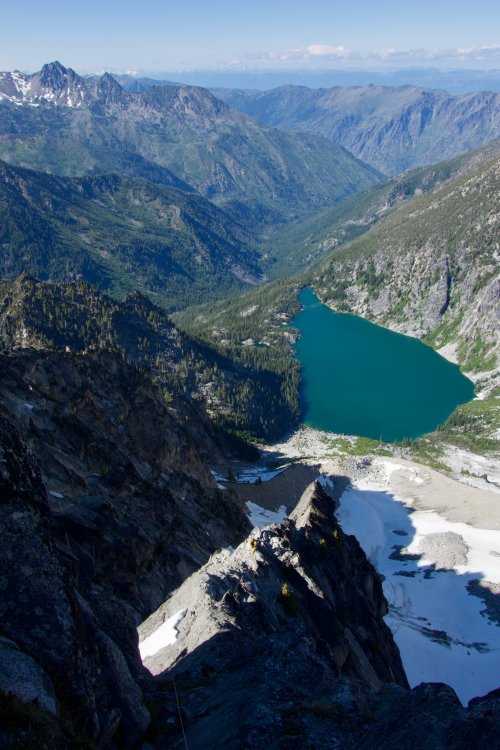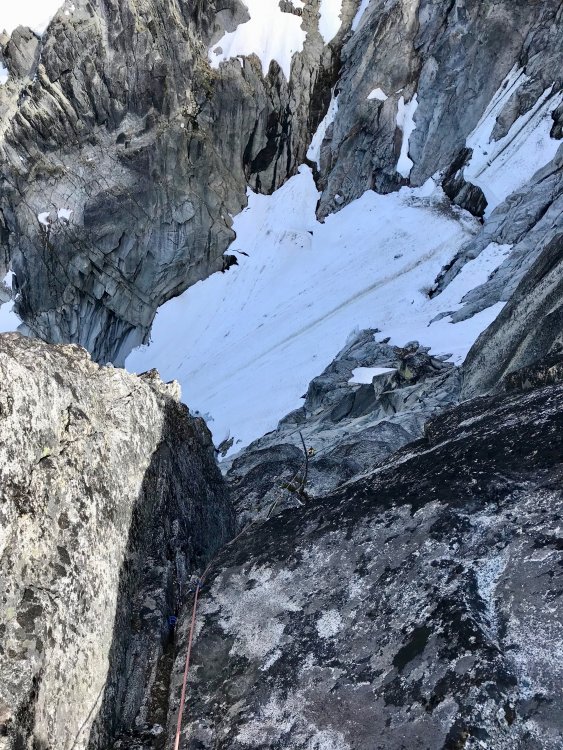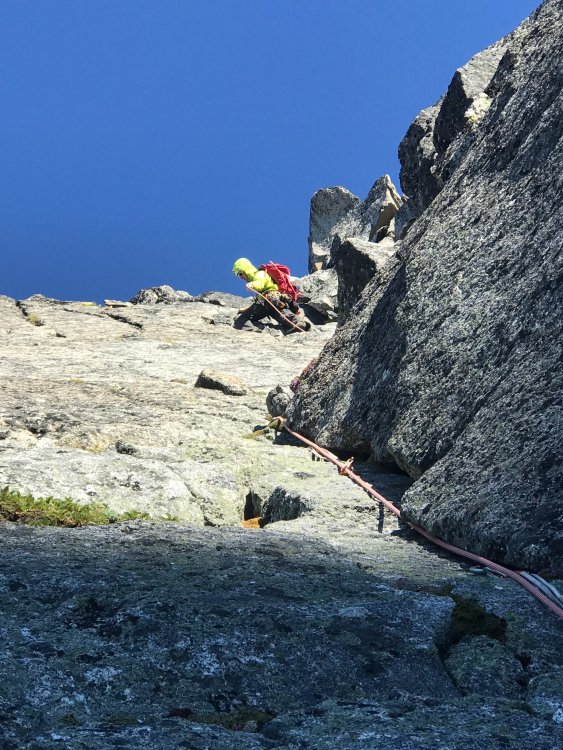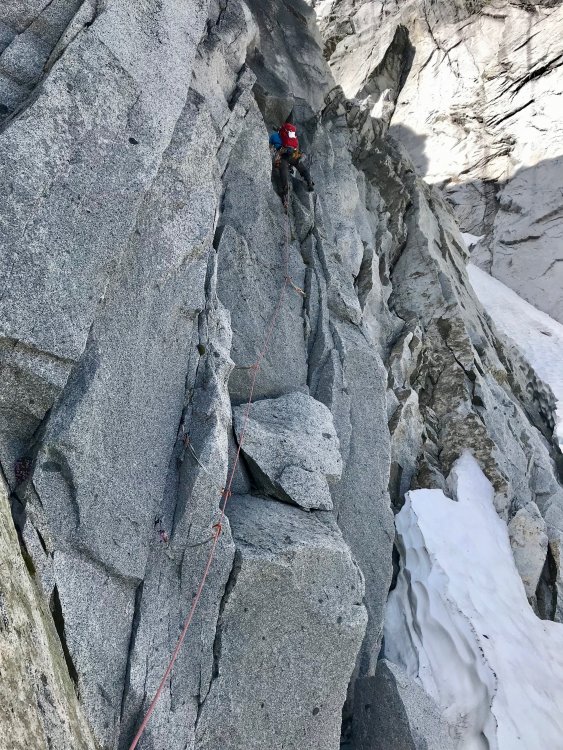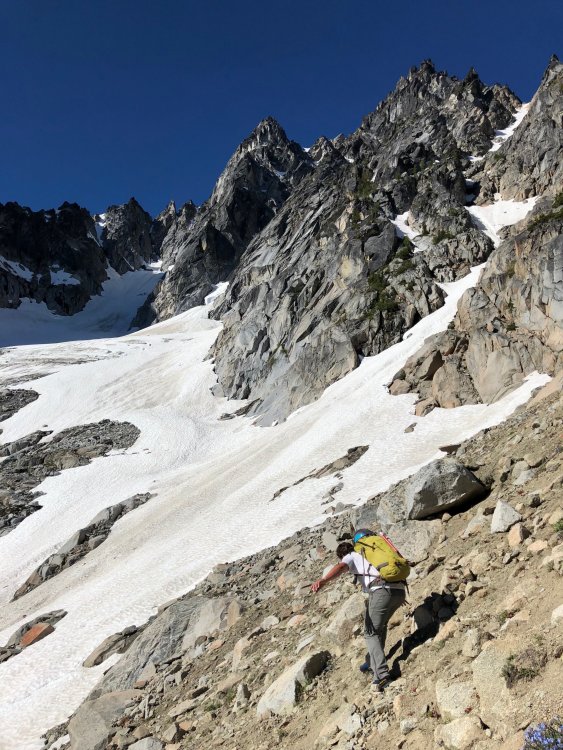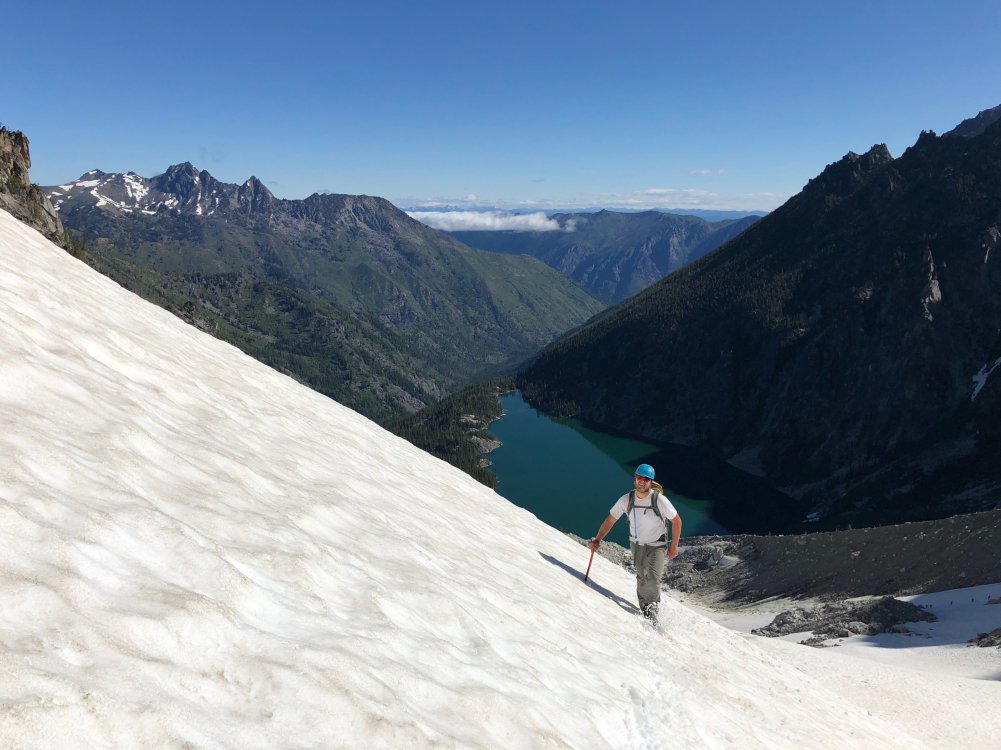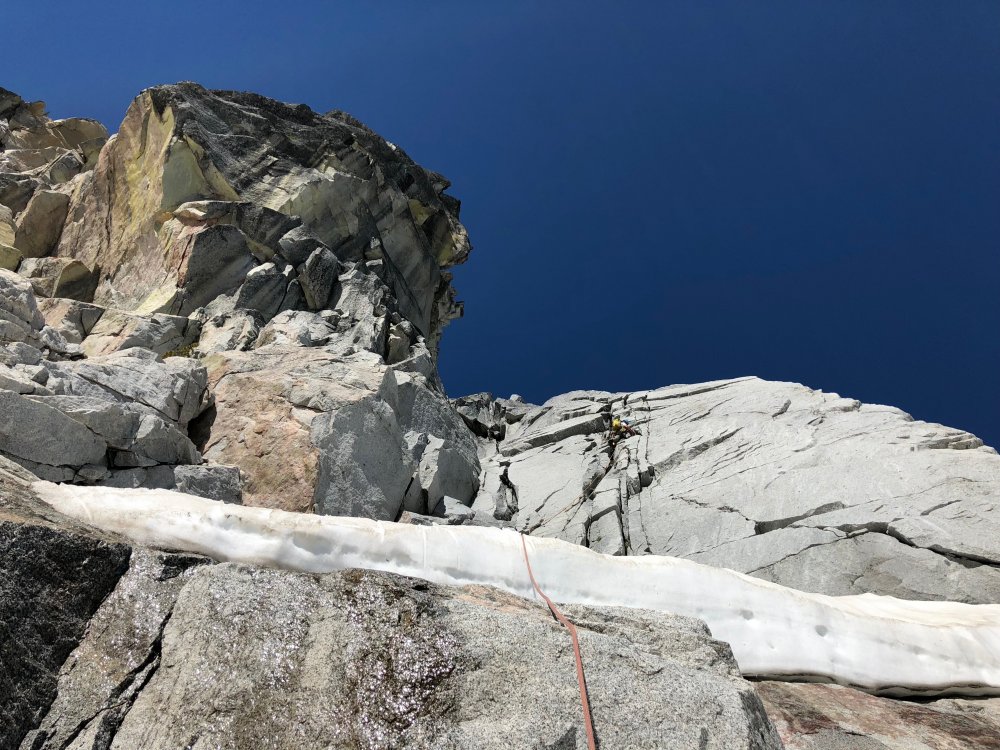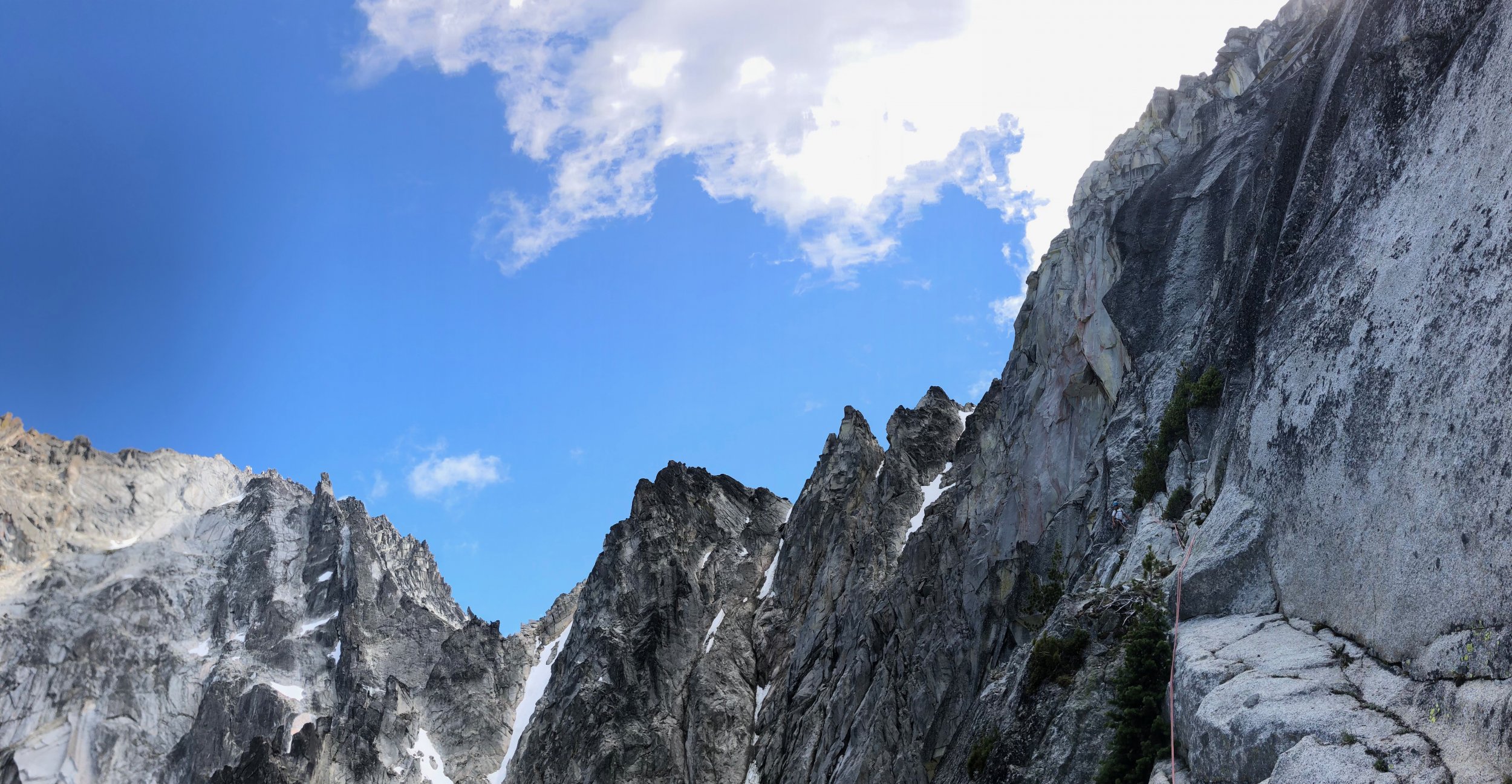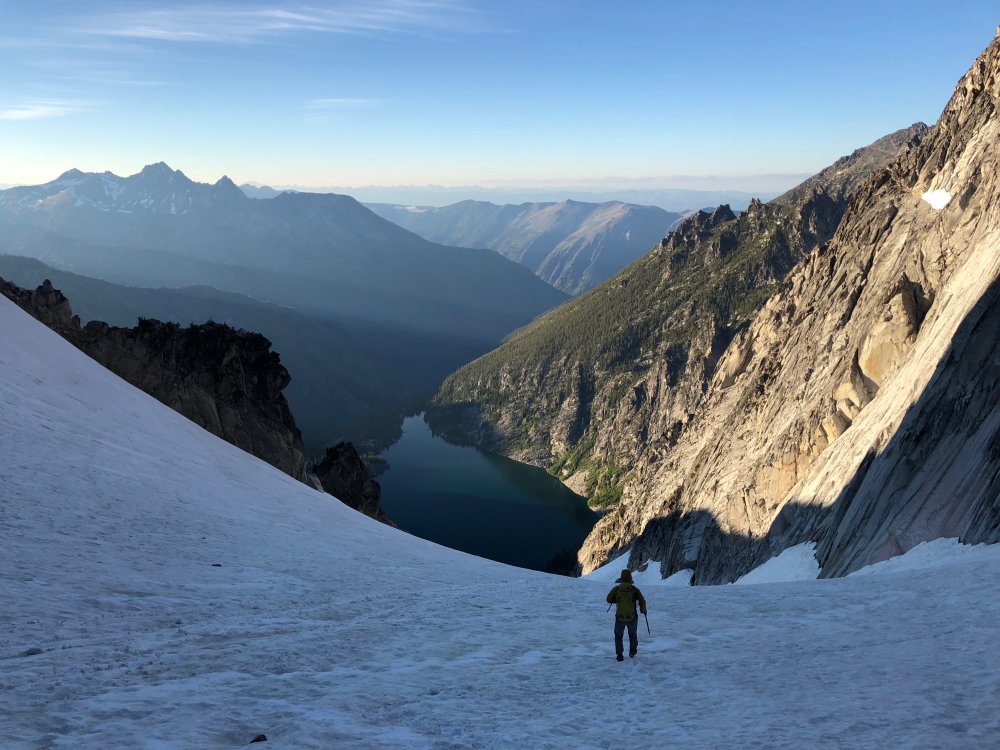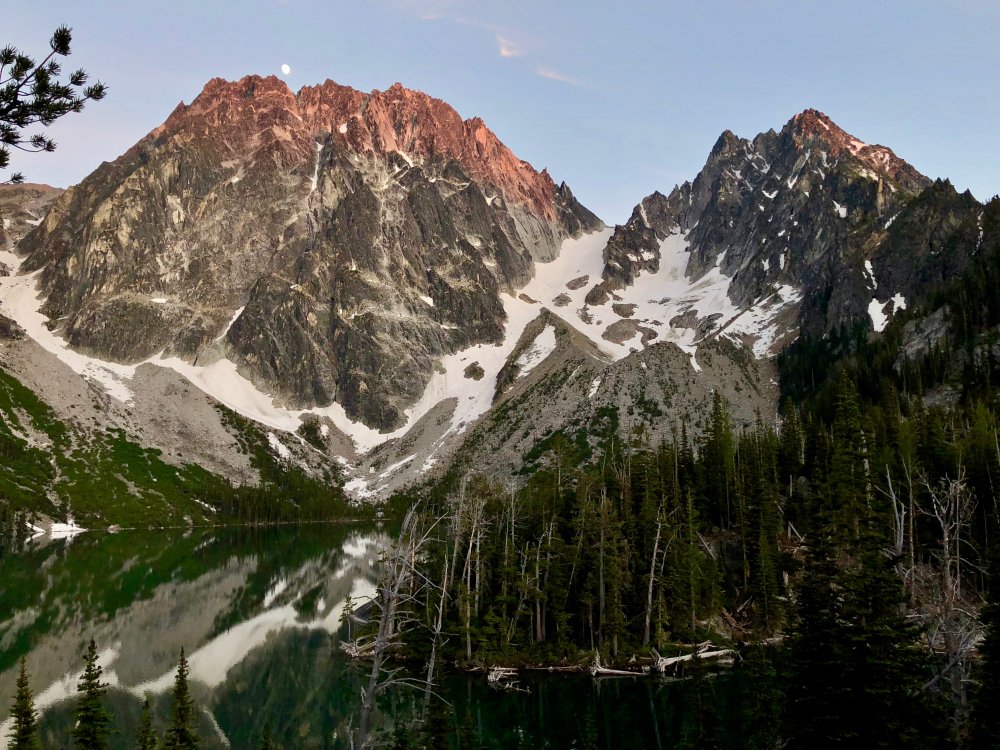Leaderboard
Popular Content
Showing content with the highest reputation on 06/30/18 in all areas
-
Trip: Mount Prophet - "Jacob's Ladder" (AKA full SW rib...FA?) Trip Date: 06/24/2018 Trip Report: "And Jacob went out from Beersheba, and went toward Haran. And he lighted upon a certain place, and tarried there all night, because the sun was set; and he took of the stones of that place, and put them for his pillows, and lay down in that place to sleep. And he dreamed, and behold a ladder set up on the earth, and the top of it reached to heaven: and behold the angels of God ascending and descending on it." - Genesis 28:10-12 KJV Grunting our way up the prominent rib on the SW side of Mount Prophet (above, in photo taken from Luna Peak by Martin Shetter), nobody would have mistaken Kit Moffitt and I for angels. Although the summit of Prophet this past Sunday was certainly much closer to heaven than the bug infested forests back at Luna Camp, our home for two nights as we investigated the directissima up the SW rib. Our aim was to explore above 5450' on the feature, where everyone seems to traverse off the rib into a typically crappy talus basin (via 4th class down climb). Given the ominous warning on SummitPost, Kit and I went in with a rope, rack, and even a pair of rock shoes: "The rib has cliffs on either side and no one has yet explored the possibility of climbing it directly to the summit. That could prove to be a bad idea."- SP We were a little disappointed that the gear stayed in the pack the entire time, however (long way to carry it!), but pleasantly surprised to find fairly clean and exposed class 3 climbing for ~1500 vertical feet to the summit. There really is no reason to leave the SW rib for future parties, until it is time to descend. We did go down the "SW rib" route (south of actual SW rib, described well on SP and found it to be your typical mix of scree, talus,and pain). We also found a way back on to the rib at about 5600' that only involved a bit of exposed class 3 (seems easier than how the lower access is described on SP?). Given the obvious difference in quality between the two scramble routes, I suspect that future parties will follow the loop that Kit and I did this past Sunday. However, I wouldn't be surprised if someone has ascended the full SW rib before we did this past weekend. Does anyone have info of previous parties, before Kit and I go claiming this massive, 3rd class, FA?? It is quite prominent as you descend out Access (Axes? Pickaxes?) Creek, and I noticed it back in 2007 on the exit from my first Pickets trip. It was fun to come back and explore something that has not been documented before- our very own backyard adventure! Just goes to show that there are still plenty of blanks on the (climbing) map, even for the blue collar set.... Calling the resort for the boat pickup, saving 12 miles RT: Luna Peak: Mac Spires, Inspiration, The Pyramid, Degenhardt: Blue collar! Nearing the summit as the rib fades: Jack: "Jacob's Ladder" from the summit Old habits die hard. Hanging out with the ghosts at Good Food, post trip: Gear Notes: Helmet, axe, crampons (early season). We brought gear in case it was technical, but found nothing over exposed class 3. Approach Notes: Big Beaver trail to just before Luna camp, then head uphill a steep vertical mile to the summit. It goes from hiking to scrambling at about 5800' The slope turns into the SW rib which is followed religiously to the summit. Descend on the south side of the rib until you can regain it about 5600'2 points
-
Looks like a fun romp. Good training to haul a rack and rope and the odor from old rock shoes keeps the bugs at bay. Or maybe attracts them. We drove by Good Food on Fathers day and laughed about our last trip there where my wedding ring fell off into one of the "bathroom" sinks and because there was no stopper, went right down the drain. I retrieved a pair of channel locks from the truck and proceeded to remove the P-trap to find my ring. While reinstalling the P-Trap, I was surprised by someone opening the door and I blurted out "this one is closed for repairs!" as they scurried out. I washed up (and checked for leaks), put the channel locks away and went in to find our table. We laughed when someone at the table next to us was overheard complaining about the crabby a**hole plumber in the bathroom.2 points
-
Hey all! Before this week I'd never climbed Tahoma, but after traversing the summit three times in five days and running all the way around the base, I can say I understand the special place this big mountain has in the hearts of all Cascade climbers. The combo of insane vertical relief, great access, well-established routes and stunning scenery make this one of the unique mountains of the world. A great way to experience this place, I thought, would be the "infinity loop". It's been done a couple times so far, and deserves more attention from the many dedicated mountain runners of the world. Though its certainly not a race, I think it's interesting to post times, to give others a sense of what might be possible and encourage motivated folks to train harder. Start (White River): June 22 3:23am End (White River): June 24 9:45pm Total: 66 hours and 22 minutes Mileage: 130ish Vertical gain: ~45 thousand feet Routes: up Emmons, down DC. Twice. One full lap of the Wonderland trail. Here's my trip report of the adventure: https://ropeandsummit.wordpress.com/2018/06/27/rainier-infinity-loop/ And my Instagram if you wanna follow along on future shenanigans: @ropeandsummit Thanks! Scott1 point
-
Trip: Colchuck Peak - NE Buttress (Kearney) Trip Date: 06/23/2018 Trip Report: A few years ago when I got Alan Kearney's Classic Climbs of the Northwest guidebook, I was a bit surprised to see an unfamiliar route on a familiar peak—the Northeast Buttress on Colchuck Peak made Kearney's short list of 51 routes, so it had to be good but I hadn't heard much about it. A bit of searching on Cascade Climbers yielded a mixed bag, especially when considering the original Beckey line. In either case, the route went onto my list. Adam and I had talked about climbing together many times before, but it hadn't yet come together. He reached out early this week and we hatched a plan to car-to-car the NE Buttress (Kearney version) on Saturday. We drove out to the Stuart Lake Trailhead late on Friday night and got a little sleep there with alarms set for 5am—we were guessing that we could do the route in about 14 hours, but also knew we had a lot of daylight in case things weren't so fast. We started the approach just before 6am and went pretty fast. 2 hours in, we were on the far side of the lake on our way up the moraine. A little shy of 3.5 hours at 9:15am had us at the base of the ridge after enjoying continuous snow from the moraine up. We each had strap-on crampons on our approach shoes and light axes. The approach After consulting the beta a little, we located the first pitch of Kearney's start and racked up below it at the toe of the buttress. We'd brought rock shoes and a rack to 3 with doubles of .5 through 2. Adam took the first pitch at 10am and had a great time on the wide, broken crack on solid rock after traversing around some snow on sandy terrain to get there. I then did a very short pitch to the top of the crest. From there, it looked like the line might go lower later in the season, but the couloir snow convinced me to stay on a ramp system just a bit higher. After down-climbing a little from the crest, I traversed over and made a fun, steep move to get onto more solid granite which I ran right, then up a seam, and then back left to a ledge for the belay. Pitch 1 and Pitch 3 Pitch 4 turned out to be a bit of a low point. Adam set off and quickly encountered some moss and dirt on his traverse to the main dihedral. Sections of the pitch were really fun while others had a bit too much dirt and loose gravel. We knew we were on the right track, though, due to a couple of fixed pins we passed along the way. It took quite a while for Adam to find the way and stay safe on this pitch and it was 1:30pm before both of us were on top. The ledges We switched to approach shoes and doubled our rope in half for the ledge systems. I headed across and found that the rock quality and number of trees in the way reduced after the first pitch or so. It was actually pretty fun to move fast and link 3-4 pitches in one block. On a nice ledge before the route turned up the wall, we put our rock shoes back on and tied into each end of the rope. Adam did a quick bump of our belay to the base of the crux pitch and then set off. With our 70m rope and about 15 feet of me simul-climbing at the end, he was able to reach the ridge crest, linking pitches 9 and 10. I followed the pitch and had a great time—the rock was solid and the movement was varied and interesting. It meandered left before traversing back right and then into a left-facing corner all the way to the ridge. We were both on top of the crest at 4:30pm. Looking down the crux pitches, the buttress crest, and the final pitch Back in approach shoes, I linked pitches 11 and 12, getting us up the buttress crest and onto some ledges below the headwall. Views back to the belay on the ridge crest and Colchuck Lake were stellar. Adam bumped us up to the headwall and, after a few minutes of searching, we found a rightward traverse under big blocks for 80 feet or so on ledges to the North-facing dihedral that would bring us to the top. I took this pitch, having a ton of fun in the early evening sun and finding edges and gear anywhere I wanted them. I ran out of rope and gear just below the top and Adam headed through and brought me up. One loose block that had seemed solid when I banged on it with my hand decided to go as I mantled to the top and I had to jump out of the way, spraining my ankle a little trying to land on a foothold—thankfully the rock sailed right by me. We topped out a little after 7pm for about 9 hours on the route—a bit longer than we'd expected, but we hadn't been rushing and instead had been feeling pretty casual throughout. We started down by 7:30pm on dirt and rock to the col and then continuous snow down the glacier (skier's right fork) until a few hundred feet from the trail. It was 8:45pm when we got to the corner of the lake at the end of the boulder field. We only stopped once on the way out to numb ourselves a bit with bourbon and take in the sunset hitting Dragontail and Colchuck. We were at the car a little after 10:30pm for a little less than 17 hours on the day. While there were a few moments on the route where dirt, moss, lichen, and loose rock detracted, so much of the route was good climbing on good rock with a great position and view. We agreed that it was more interesting and sustained than the Serpentine Arete on Dragontail (which did not make the Kearney guide...). This TR on my site: https://www.jeffreyjhebert.com/adventures/ne-buttress-on-colchuck-peak Gear Notes: Single rack to 3 with doubles .5 to 2 worked well for us to do link pitches and simul-climb Approach Notes: Approach shoes, strap-on crampons, and light axes were fine1 point
-
It's no Huey Lewis, but this is more my style:1 point
-
If you are genuinely interested in becoming a professional guide, get certified. You will need wilderness first responder (WFR) first aid, leave no trace (LNT) certification, and avalanche training (if ski or alpine guiding). You will need to take courses and exams through the AMGA to work towards guide certification. You can work concurrently for a reputable guide service for a few seasons while taking courses as a guide aspirant before striking out on your own. The days of any Johnny rock jock with a rope calling themselves a guide are thankfully over. One thing I learned from trying my hand at guiding is it is NOT climbing. Guiding requires a huge tool box and skills, both technical and soft, which you would not necessarily pick up from recreational climbing. This is where the AMGA courses, exams, and certifications come in. The two traits all good guides have in common are, from my experience, a mellow, unflappable disposition and a dedication to their profession. Traditionally, only guide services could obtain permits. Now there is the a guide coop for obtaining permits for certified guides: http://www.certifiedguidescooperative.com/. Also, independent guides can piggy back on other guide services permits. I recommend contacting Chris Simmons, a full IFMGA certified guide who has worked all over the world and is the consummate professional guide. He could give you a better perspective of what it entails to go from working for a guide service to striking out on ones own. https://simmonsmountain.works/1 point
-
isn't that everyone? you have never seen me snowboard. there is no rushing and def no adrenaline. I think I lost that gland 10 years ago.1 point


